The Ultimate Guide to Incident Management Tools in 2025
Introduction
Last updated on September 2, 2025.
Incident management tools play a key role in helping organizations to effectively handle service outages. With so many incident management tools around with different feature sets, it's often difficult to find the one that is right for your needs. In this article, we attempt to make a list of incident management software available in 2025 with their features to help you arrive at the right one.
We have focused on tools that have incident management capabilities. We have left out many good tools which are focused only on incident response, or on monitoring and alert triggering, or on ticket management to avoid cluttering this article.
There are a few additions and removals compared to the 2024 list.

- Introduction
- Benefits of Using an Incident Management Tool
- How To Choose the Right Incident Management Tool
- Trends in Incident Management Tools in 2025
- List of Incident Management Tools in 2025
- Conclusion
Download a summary of this article as a PDF
Benefits of Using an Incident Management Tool
- An incident management tool streamlines the incident management process by defining and automating workflows for your on-call teams. It can assist you in creating runbooks, alerting policies, escalation policies, and defining and managing on-call schedules.
- Incident management software can integrate with your in-house observability stack. Your observability stack is a key source of incidents.
- Incident management tools can integrate with third-party observability and uptime monitoring tools, which are another source of incidents.
- They can also integrate with your existing communication and collaboration tools to provide real-time updates.
- Some incident management tools add context to your ongoing incidents by pulling in data from your infrastructure, applications, and observability systems. This can add significant information to narrow down the root cause.
- Incident management tools can provide analytics which can be used to gain insights into patterns and performance to create a culture of continuous improvement.
- An incident management tool can also generate audit trails and standardized documentation for compliance requirements.
- Incident Management software can also provide status pages - both internal and external - for your stakeholders.
How To Choose the Right Incident Management Tool
The important thing to note here is that you need to choose the right tool, not necessarily the best one in the market, or what the majority is using. To do that you need to define the right criteria. These guidelines will help you to arrive at the parameters you can look at to evaluate tools.
Features
Identify the key features you absolutely need to have. Shiny features that sound good to have and may be helpful for other teams need not necessarily be a part of your checklist. Work with your team to identify the features you need. Does the tool have them in a single pricing tier that fits your budget?
A non-exhaustive list that you can use to arrive at a decision:
- Incident lifecycle management
- On-call scheduling and management
- Schedule overrides
- Alerting policies
- Third-party integrations
- Analytics and reporting
- Status pages
- Role-based access control
- API access
- Runbooks integration
- Mobile app
Cost
Cost is obviously an important factor. Does the tool have transparent pricing? Are there any hidden costs?
Support
Does the tool have 24/7 support? How responsive is their support team? Look at the various channels by which you can reach support - phone, email, chat, social media channels.
Reliability
Does the tool have a good track record of being available? How transparent are they about their uptime? Look at their public status page and search for reviews on social sites. What are other users saying about their experience?
Incident management tools need to be always available and reliable - or you run the risk of not knowing when anything goes wrong.
Integration With Your Workflow
The tool should integrate well with your existing workflow. Your team probably already has a well-defined one. Look at the third-party integrations available. Some might integrate directly with your communication and collaboration tools, others might need custom API integration.
Ability to Scale With Your Growth
Do a forecast of how much your team and infrastructure will grow in the next few years. Would that lead to an increase in your monthly bill for the tool from more users/alerts/etc?
Documentation
Does the tool have comprehensive documentation? Can your team find easy-to-follow instructions on how to use it? What about advanced use cases?
Ease of Use
A good UI is crucial, especially in times of crisis. The UI should be intuitive, and have an easy way to both summarize the ongoing incidents and drill down into the details.
Data Security
Read the data security and privacy policy for the tool. Depending on your business's regulatory requirements, you might need to have a tool that is compliant with your required data security standards.
Trends in Incident Management Tools in 2025
AI Ops
AI-based incident management, alert grouping, automated root cause analysis, and natural language interaction for incidents are growing. Although a lot of tools have incorporated AI-based features, it's still in its infancy when it comes to automated remediation. Security risks are also a concern.
Focused Workflows
More and more tools are focusing on the ability to handle the entire incident lifecycle in one place. For example, Slack-based incident management tools - for teams that use Slack - enable users to manage incidents directly from Slack. This makes it easier for users to collaborate during high-stress situations as they are working in a familiar environment with ready access to colleagues and other information.
List of Incident Management Tools in 2025
PagerDuty
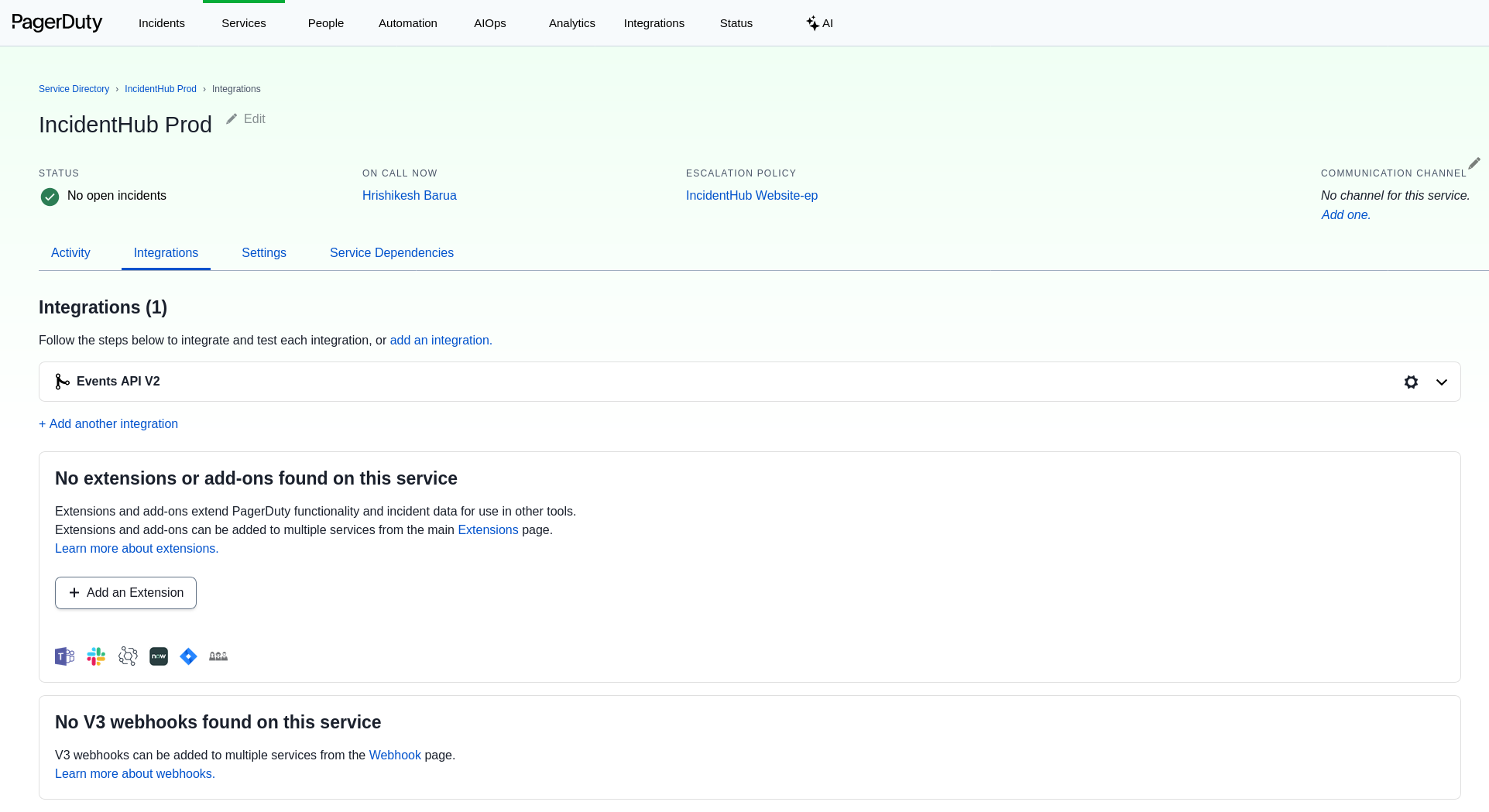
Key Features
- Alerting over multiple channels including phone, app, email.
- On-call management - scheduling, roster management, overrides.
- Rule definitions for alert routing.
- Integrations with most common tools.
- APIs for incident lifecycle management.
- Status pages.
- Support for teams with role-based permissions.
- Integration with ITSM tools.
- Analytics.
- Single sign-on.
- Maintenance mode
PagerDuty is best for large enterprises requiring comprehensive incident management, although it can be used by smaller teams too.
ServiceNow
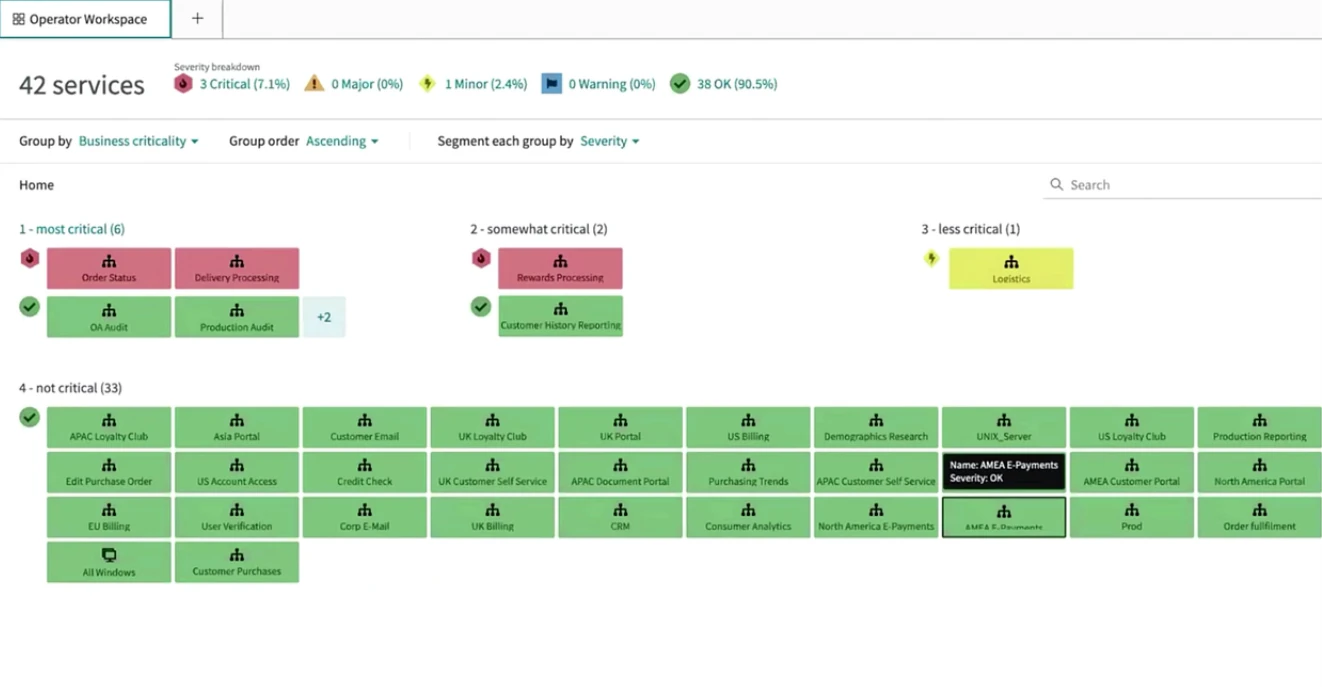
Key Features
- On-call scheduling with overrides.
- Supports multiple notification channels.
- Automated ticket routing.
- SLA tracking.
- Compliance and governance features.
- Integrations with many third-party tools.
- Analytics.
It's best suited for organizations using ServiceNow products like ITSM.
Splunk On-Call
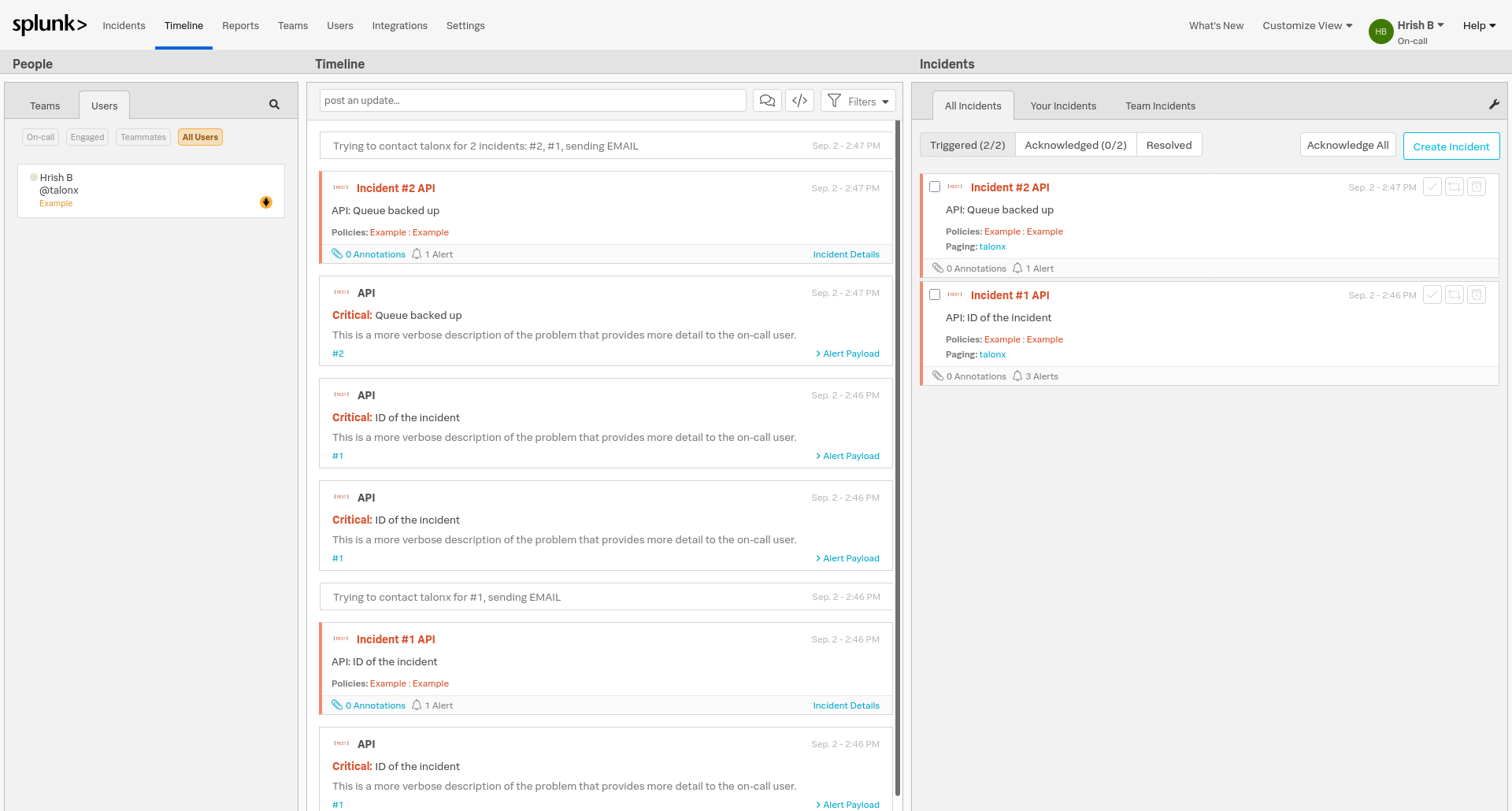
Key Features
- On-call schedules and overrides.
- Role-based permissions.
- Rules engine for triggering custom actions.
- Incident waiting rooms to reduce alert fatigue.
- Maintenance mode
- Notifications via email, phone, SMS, email, app push.
- Third-party integrations with many common tools.
Splunk On-Call, formerly VictorOps, is best suited for teams already using Splunk for monitoring.
Grafana Cloud IRM

Key Features
- Open source and also has a managed solution.
- Alert grouping.
- Escalation policies.
- Alert routing.
- Calendar-based on-call schedule and roster.
- Maintenance mode.
- Integrations with common third-party tools - Slack, SMS, Telegram, Phone.
- Role based access control.
- Analytics.
Formerly known as Grafana OnCall, the OnCall and Incident apps were merged into a single Grafana Cloud IRM. Grafana Cloud IRM works seamlessly with other Grafana Cloud products, so it is best suited for teams already using Grafana for monitoring.
iLert

Key Features
- On-call schedules and escalation policies.
- Notifications using SMS, push, voice call.
- Maintenance support.
- Critical phone call routing using customizable multi-language IVR.
- Public status pages.
- Integrations with MS Teams and Slack for chatops-based incident management.
- Integrates with most common tools.
iLert is best suited for mid-sized Ops teams.
incident.io
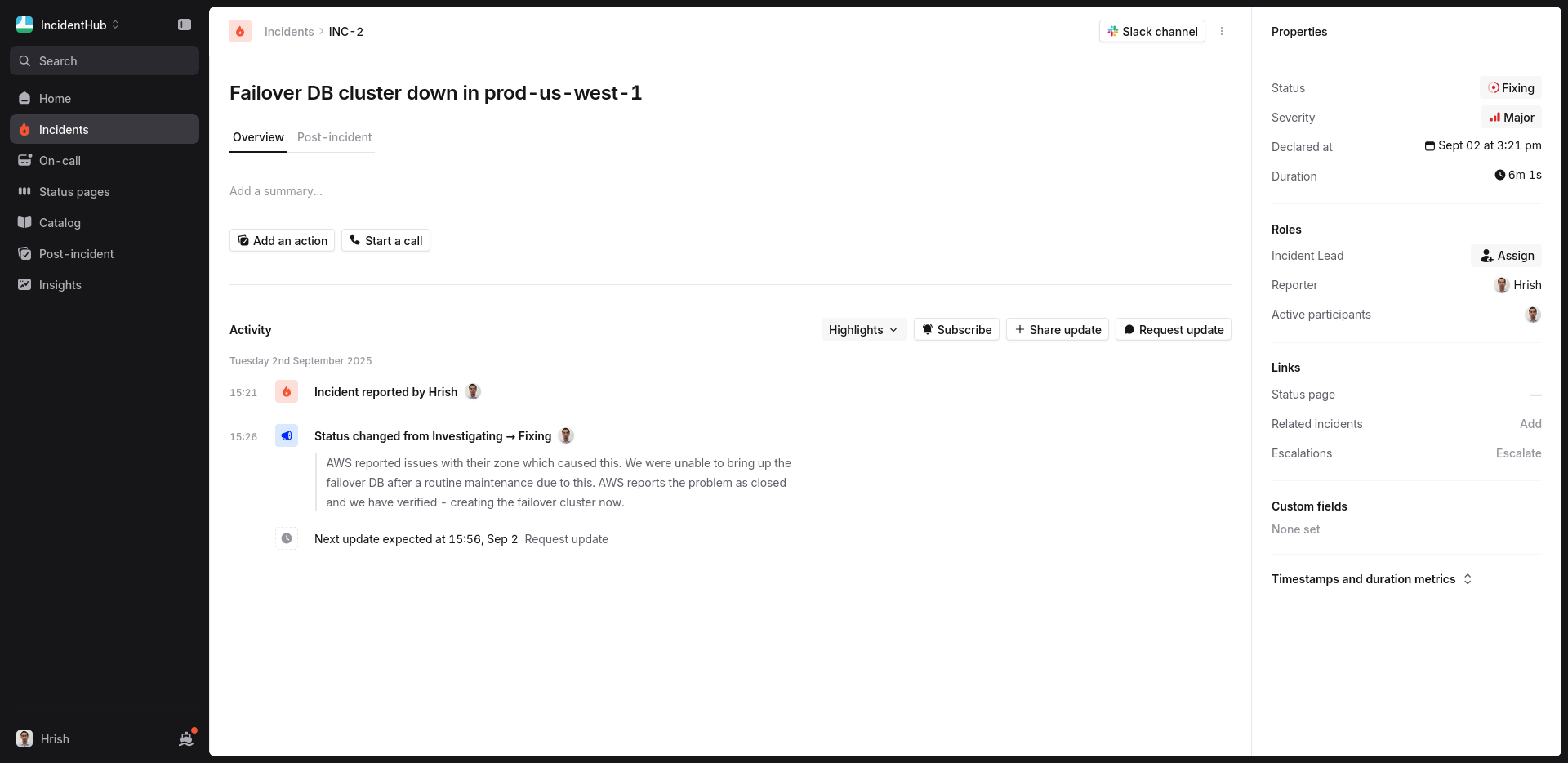
Key Features
- On-call scheduling and escalations, with overrides.
- Notifications with app push, phone, email, Slack, MS Teams.
- Incident lifecycle management from within Slack.
- Private incidents support.
- API for integration and data access.
- Status pages.
- Analytics.
- Third-party integrations.
- Integrates with CRM systems.
incident.io focuses on being an incident management platform with a Slack-first approach.
FireHydrant
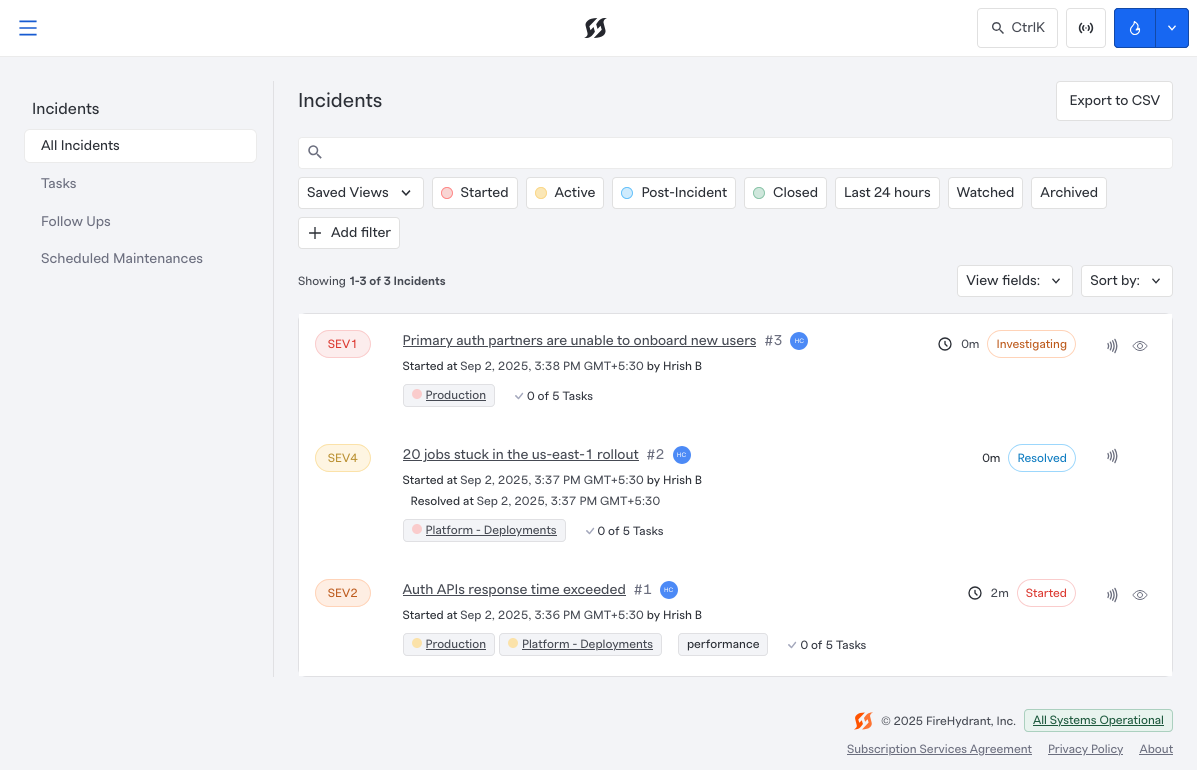
Key Features
- On-call management.
- Notifications on app push, Slack, Whatsapp.
- Runbooks.
- Service catalog.
- Incident retrospectives.
- Analytics.
- Integrates with most common tools.
- Status pages.
FireHydrant with its strong incident workflows and retrospectives is best suited for SRE teams.
Squadcast

Key Features
- On-call scheduling, escalation policies, and overrides.
- Integrations with common tools.
- Live call routing to connect to on-call folks directly.
- Alert classification and routing rules.
- Auto-pause flapping alerts.
- Analytics.
- Manage incidents directly from Slack.
- Runbooks.
- Status pages.
Squadcast, acquired by SolarWinds, is meant for modern SRE and Ops teams with its alert routing, post-mortem support, and chatops features.
Better Stack
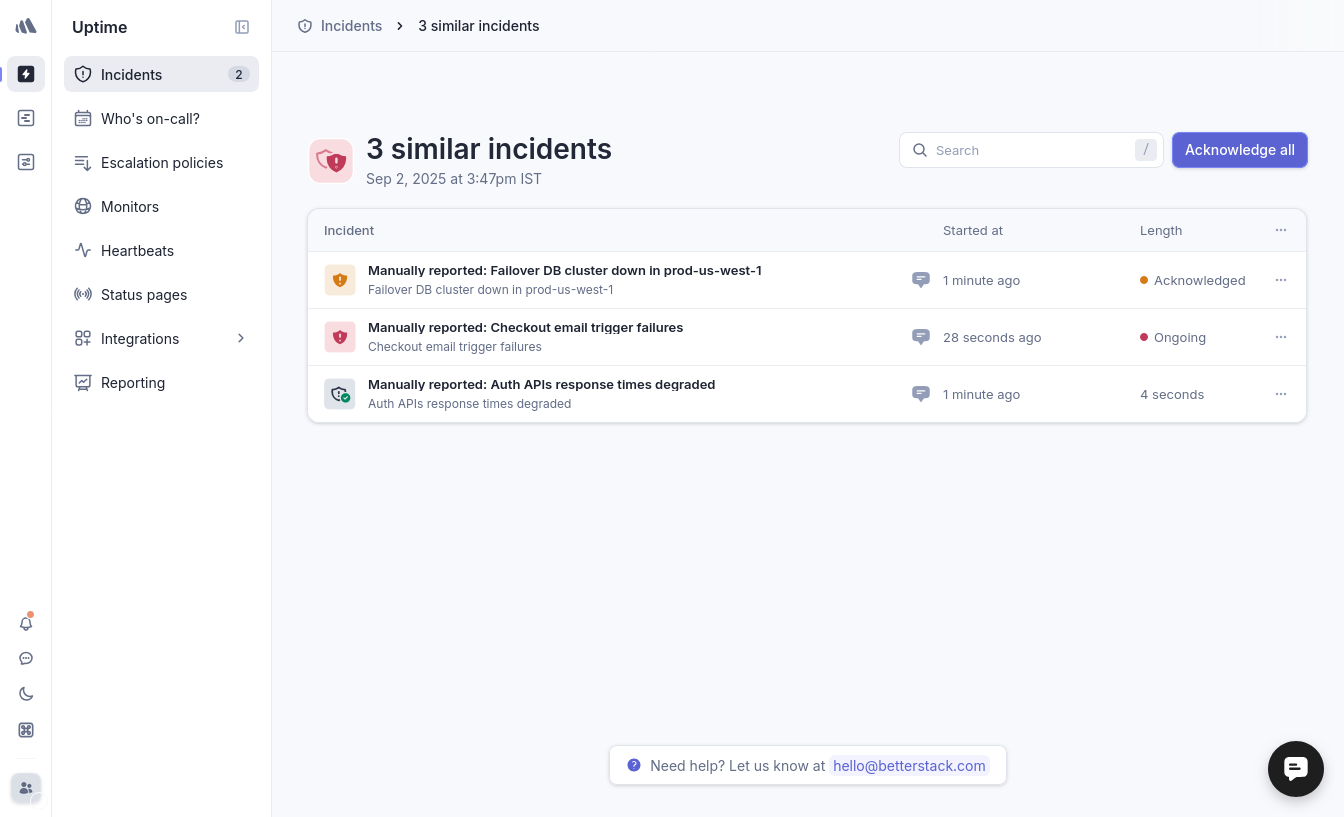
Key Features
- On-call scheduling and escalation policies.
- Incident grouping.
- Status pages.
- Integrations with common tools.
- Single-sign on.
- Teams support.
Better Stack is a suite of products that includes monitoring and logging also, but we felt it should be included in this list because of its integrated on-call features.
Rootly
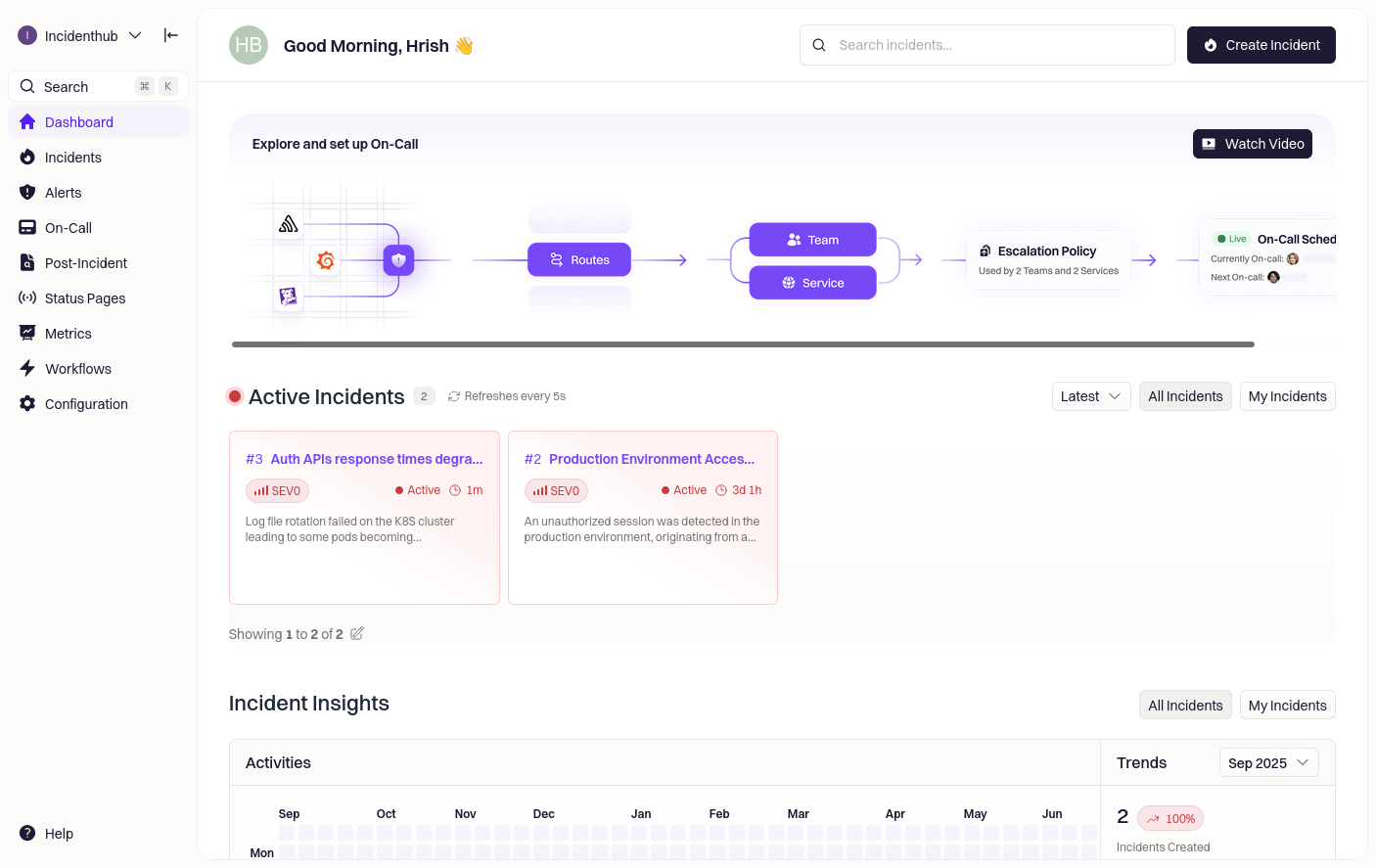
Key Features
- On-call scheduling, escalation policies, and overrides.
- Alert grouping based on time-window and on content.
- Integrates with many third-party tools.
- Playbooks.
- Support for managing the incident lifecycle directly from Slack.
- Retrospectives with automatic data capture and sync with Jira.
- Analytics.
Rootly specializes in automating incident workflows with strong integration capabilities and customizable playbooks.
xMatters
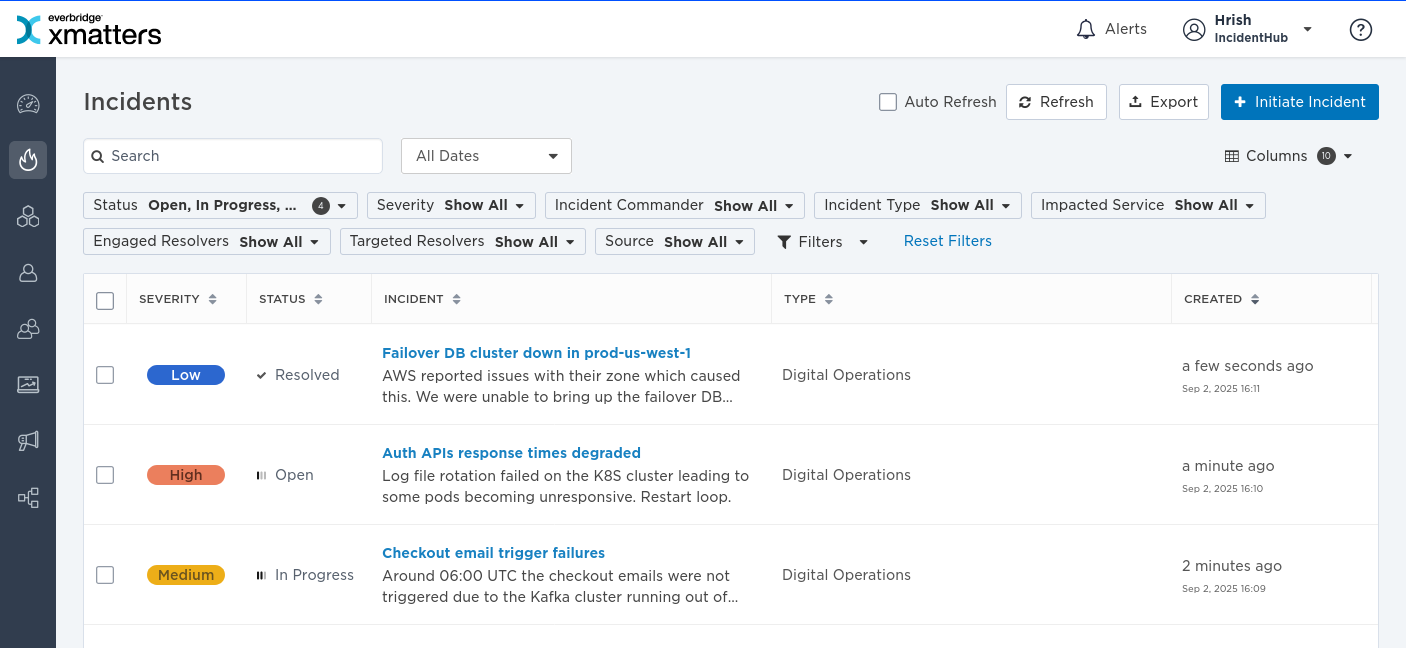
Key Features
- Alert threshold configuration.
- Automatic correlation between alerts that might relate to the same underlying issue.
- Ability to subscribe to notifications as an observer.
- Integrates with many common tools like Slaack, ServiceNow, Google Chat, MS Teams, etc for alerting
- Supports cloud provider integrations for monitoring with AWS, Azure, GCP, etc.
- Detailed analytics and reporting.
- Incident timeline view.
- On-call scheduling, rotation, and management.
- SMS, Phone, Push notifications.
- Status pages.
- Mobile apps for iOS and Android.
xMatters is suited for Ops/SRE and IT Teams and also for teams that have special regulatory requirements like healthcare and financial services.
AlertOps
Key Features
- On-call scheduling, rotation, and management.
- Dynamic alert routing and grouping.
- Custom data enrichment to add more context to alerts.
- API-based integration with.
- Integration with Slack, MS Teams, etc.
- Integrates with Ops/SRE tools like Jenkins, GitLab, GitHub, Prometheus.
- Predefined message templates.
- Status pages.
- Post-mortem reports.
- AI-based grouping and natural language interaction for incidents.
AlertOps is used by IT operations, Ops, and incident response teams to manage alerts and coordinate response.
Conclusion
Choosing an incident management tool involves looking at the problem holistically:
| Criterion | What to evaluate |
|---|---|
| Features | Instead of looking at the number of features, list down the ones you actually need for your team and evaluate based on that. |
| Cost | Incident Management is a key part of your business operations, so you also need to forecast future costs if your team or infrastructure is growing. Look out for hidden costs. |
| Reliability | Uptime and top-notch availability are a must for such a system that is crucial to your business operations. |
| Customer support | Your incident management systems' reliability needs to be top-notch. However, incidents happen, even in incident management software, so make sure they have great customer support. |
| Integration capabilities | Any incident management tool should be able to integrate well with your existing monitoring stack as well as with your communication and collaboration tools. |
| Reports | Metrics and analytics are invaluable for figuring out trends in your outages and where to focus on for improvement. |
| Flexibility in scheduling | Easy roster setup and overrides are a must. |
| Growth capabilities | If your team is growing, you need a tool that can scale with you. |
| Documentation | The tool should have comprehensive documentation and a knowledge base. |
| Ease of use | The tool should be easy to use and have an intuitive UI. |
| Data security | Apart from basic data security to protect your data, look at alignment with your regulatory requirements if any. |
Choose the tool that is right for you and your team.
You might also like:
- The No-Nonsense Guide to Runbook Best Practices
- The Rising Role of Slack in Incident Management
- Best Practices for Planning for Upcoming Cloud Maintenance
- A Step by Step Guide to Checking if a SaaS is Down
This article was originally published on the IncidentHub blog.
All product names, company names, logos and trademarks are the property of their respective owners.
Photo credits: Jonathan Gallegos on Unsplash

